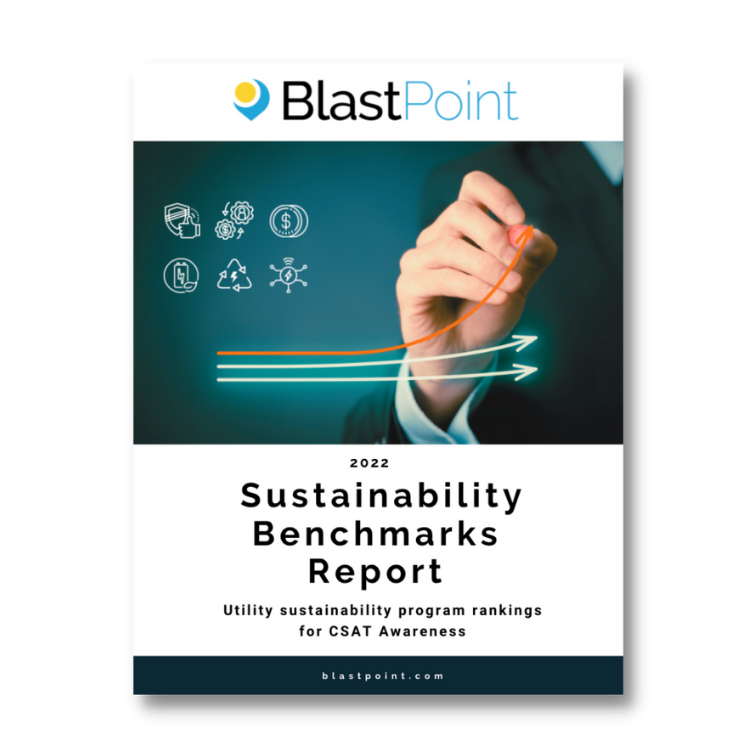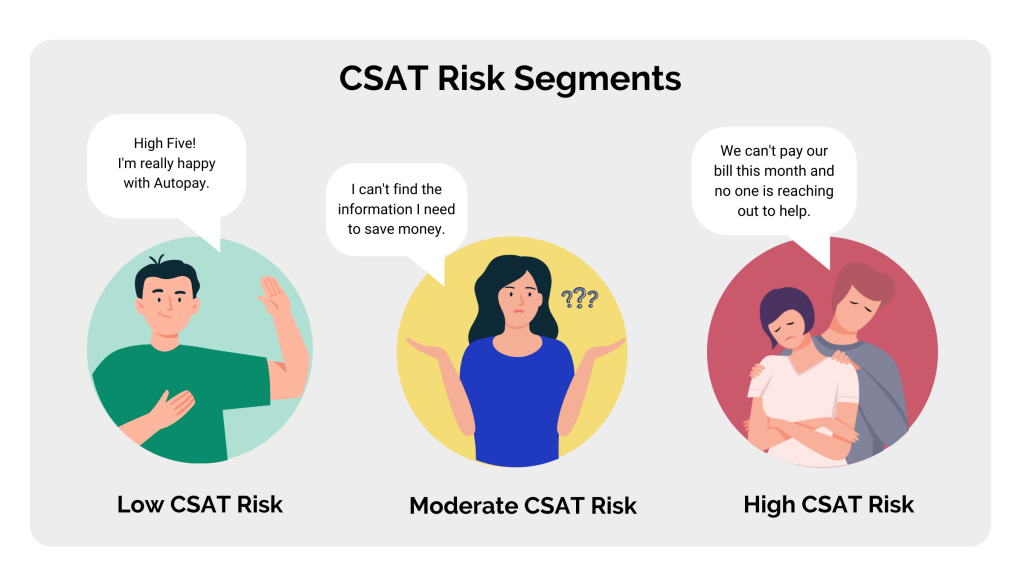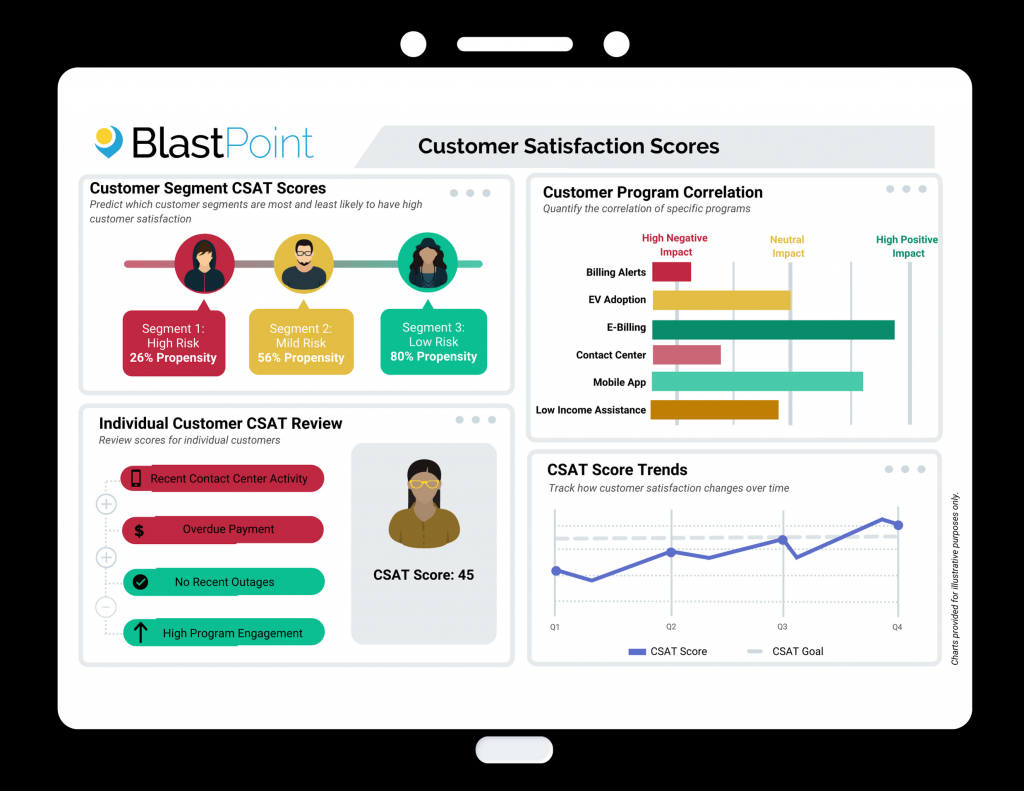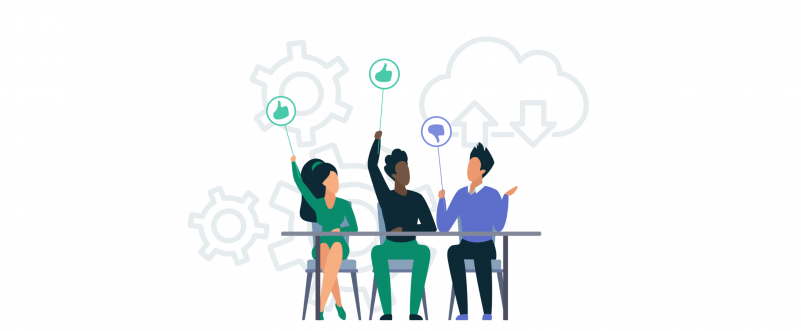Measuring customer satisfaction is essential for companies to succeed. But too often the measurement process becomes cumbersome, and low survey response rates mean scores are based on a non-representative sample. By utilizing customer data to measure CSAT scores automatically, companies can capture CSAT at the household or segment level daily. Automated scores make it easier to intervene proactively, correlate scores with specific customer journeys and programs, and personalize at scale.
2021 Customer Satisfaction Scores Dropped for a Majority of Industries
Every year since 1994, the American Customer Survey Index, or ACSI, has compiled customer satisfaction data and published benchmarks for major industries. Recently, they added 2021 data to their Benchmarks by Industry report, and suffice it to say that the numbers aren’t looking up. Of the 52 industry categories, 21 recorded lower scores than 2020, 16 remained the same, and 10 increased (5 were n/a). Here are a few examples of industries that rose, fell, and held steady:
Lower 2021 Scores:
- Credit Unions (-1.3)
- Hotels (-3.9)
- Municipal Utilities (-1.4)
- Online Retail (-3.7)
- Gasoline Stations (-2.7)
- Breweries (-2.5)
Higher 2021 Scores:
- Computer Software (+1.3)
- Full-Service Restaurants (+1.3)
- Athletic Shoes (+1.3)
- Financial Advisors (+1.3)
- Airlines (+1.3)
- Health Insurance (+1.4)
No Change in 2021:
- Investor-Owned Utilities
- Cooperative Utilities
- Wireless Phone Service
- Online News & Opinion
- Banks
- Life Insurance

While the lower score for Breweries does surprise us a little, it makes sense that a lot of industries were struggling to keep customers satisfied last year. As 2022 picks up speed, companies are scrambling to get a handle on customer satisfaction scores, since CSAT provides the best insight into customer experience. According to Bernard Marr, writing for Forbes.com, improving customer experience is a “huge focus for businesses in 2022,” especially since “people will pay more for great experiences.”
Customer intelligence tools offer the accessibility, accuracy, and efficiency needed to understand customer satisfaction risk and respond proactively, improving customer experience.
Why Direct CSAT Measurements Aren’t Telling the Whole Story
Customer satisfaction captures how customers feel about your company, and those feelings often originate in whether customers’ expectations are being met. Because feelings and expectations are highly personal, they are commonly measured by asking customers directly for feedback via surveys. This is known as “direct measurement,” which usually asks customers to assign a scale ranking to a product or service. Direct measurement is obviously an important part of determining CSAT scores, but it alone doesn’t tell the whole story.
For people who spend a lot of time using web or mobile apps, being asked to rank an app or service is a very frequent occurrence. “Enjoying this app?” “How are we doing?” “How likely are you to recommend us to a friend?” These are questions consumers are constantly fielding, and most of the time, they click the X instead of responding – unless their satisfaction is either extremely high or low. The average response rate across all platforms, digital and otherwise, is only 33%. It’s a generally accepted principle that a higher response rate equals more accurate results, so hearing from 33% of customers is a starting point for understanding customer satisfaction, but does not represent the majority of the customer base.
Having to conduct and manage data from surveys in-house can also be a burden on business teams. During a time when many companies are short-staffed and customers are higher needs, the bandwidth to manually measure CSAT is very low. This leads to infrequent measurement, which further limits the usefulness of the results.
Business teams need a low-touch method for accurately measuring CSAT – while also making CSAT scores accessible so they can be utilized for decision-making.
Data-Driven CSAT Scoring Provides Accuracy & Accessibility
The alternative approach is “indirect measurement,” which involves utilizing customer behavioral data to identify touchpoints that correlate with high and low customer satisfaction. Essentially, the difference between direct and indirect CSAT measurement is between what customers say and what they actually do. As we know, data doesn’t lie: if you know how to access it, it will make a customer’s experience very clear. The indirect measurement approach also usually provides more complete data for CSAT scoring, making the scores more representative of the customer base.

Thanks to AI, indirect measurement also makes it possible to entirely automate CSAT scoring, as well as to refresh scores very frequently. Through ML algorithms, BlastPoint’s customer intelligence platform finds meaningful patterns in customer data that allows users to:
- Understand the causes of low satisfaction
- Quantify the impact of specific customer programs and journeys on CSAT scores
- Track daily changes to CSAT scores for the entire customer base, specific segments, and individual customers
- Target customers at high risk for low satisfaction for proactive outreach
Most importantly, CSAT scores should be actionable, which means that business teams need real-time scores at their fingertips for data-driven decision-making. BlastPoint’s Customer Intelligence Platform makes CSAT scores accessible to business users so those scores can be utilized strategically and in operations on a daily basis.

Reliable CSAT scores are foundational to CX initiatives in 2022. Automated, accessible, data-driven scoring makes it possible to achieve higher customer satisfaction without all of the usual guesswork. Check out the slides below to find out more, or drop us a line.

